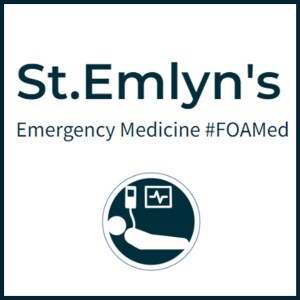
Today, we are discussing syncope, a common yet complex condition involving a transient loss of consciousness due to a temporary reduction in blood flow to the brain. This comprehensive guide aims to provide insights into diagnosing and managing syncope in the emergency department.
The Challenge of Syncope DiagnosisWhen patients present with collapse, it’s essential to differentiate between mechanical falls and syncope due to physiological reasons. The key to diagnosis lies in understanding whether the event was caused by a transient loss of consciousness or a mechanical fall. This distinction guides the diagnostic pathway and ensures the appropriate management of potential life-threatening conditions.
Physiology of SyncopeSyncope results from a temporary reduction in cerebral perfusion pressure, which can occur due to various physiological disruptions. Understanding the factors affecting cerebral perfusion, such as mean arterial pressure, cardiac output, and peripheral resistance, is crucial. Any significant deviation in these parameters can lead to syncope.
Cardiac Causes of Syncope Rhythm IssuesCardiac syncope often involves rhythm disturbances like bradycardia (abnormally slow heart rate) or tachycardia (abnormally fast heart rate). Bradycardia can reduce cardiac output, while tachycardia can decrease stroke volume. Identifying these rhythm issues is vital as they can be life-threatening.
Structural IssuesStructural heart diseases, such as aortic stenosis or hypertrophic cardiomyopathy, restrict blood flow, leading to syncope. Pulmonary embolism, although less common, can also cause syncope by obstructing pulmonary circulation.
Importance of ECG in DiagnosisThe electrocardiogram (ECG) is a critical tool for diagnosing cardiac causes of syncope. It helps identify arrhythmias, conduction abnormalities, and other cardiac issues. Continuous ECG monitoring, or Holter monitoring, can capture transient arrhythmias not seen on a standard ECG.
Neurological Causes of SyncopeNeurological conditions, such as seizures and transient ischemic attacks (TIAs), can present as syncope. Differentiating between these and true syncope is essential. Seizures often have specific signs like tongue biting, loss of bladder control, and post-ictal confusion. TIAs can cause temporary disruptions in blood flow to the brain, leading to syncope-like episodes.
Physiological Causes of Syncope Vasovagal SyncopeVasovagal syncope, triggered by stress, pain, or prolonged standing, involves a sudden drop in heart rate and blood pressure. It is a common and generally benign cause of syncope.
Orthostatic HypotensionOrthostatic hypotension, a drop in blood pressure upon standing, can result from dehydration, medications, or autonomic dysfunction. It is a frequent cause of syncope, especially in elderly patients.
Diagnostic Approach Patient HistoryA thorough patient history is crucial for identifying the cause of syncope. Key elements include the circumstances of the episode, prodromal symptoms, witness accounts, and medical history. This information helps distinguish between different causes of syncope.
Physical ExaminationA comprehensive physical examination includes checking vital signs, cardiovascular examination, and neurological assessment. Identifying abnormalities during the physical exam can provide clues to the underlying cause of syncope.
Diagnostic Tests- ECG: Identifies arrhythmias and conduction abnormalities.
- Holter Monitoring: Captures transient arrhythmias.
- Echocardiogram: Assesses structural heart diseases.
- Tilt-Table Test: Diagnoses vasovagal syncope or orthostatic hypotension.
- Blood Tests: Evaluate electrolyte levels, blood glucose, and cardiac biomarkers.
Management of cardiac syncope focuses on stabilizing heart rhythm and function. Treatments may include pacemaker implantation for bradycardia, medications for tachycardia, and surgical interventions for structural heart diseases. Arrhythmias may require implantable cardioverter-defibrillators (ICDs).
Neurological SyncopeManaging neurological causes involves addressing the underlying condition. Antiepileptic medications control seizures, while immediate interventions restore blood flow in strokes or control bleeding. TIAs require medications and lifestyle changes to reduce recurrence risk.
Physiological Syncope- Vasovagal Syncope: Management includes avoiding triggers, increasing fluid and salt intake, and using compression stockings. Severe cases may require medications.
- Orthostatic Hypotension: Gradual position changes, increased hydration, and reviewing medications. Medications like fludrocortisone may be necessary.
- Dehydration: Rehydration with oral or intravenous fluids.
- Medication Review: Adjusting or discontinuing medications contributing to syncope.
Safety netting ensures patients receive appropriate follow-up care and instructions. Key elements include providing clear discharge instructions, scheduling follow-up appointments, and educating patients about syncope causes and management.
Special Considerations Reflex Anoxic SeizuresReflex anoxic seizures, seen especially in children, involve shaking movements due to a drop in oxygenation. These can be misinterpreted as epileptic seizures but require different management.
Misdiagnosis RisksMisdiagnosis of syncope as epilepsy or vice versa is common. Always consider both possibilities, especially when symptoms overlap.
Postural Hypotension and Specific DiagnosesPostural hypotension requires careful evaluation. Special considerations include ruling out abdominal aortic aneurysm in older men and ectopic pregnancy in younger women.
ConclusionSyncope is a multifaceted condition that demands careful evaluation and management in the emergency department. By understanding the underlying causes, utilizing appropriate diagnostic tools, and implementing effective management strategies, healthcare professionals can optimize patient outcomes and reduce the risk of recurrent episodes.
This guide aims to provide valuable insights into the diagnosis and management of syncope, helping healthcare providers deliver high-quality care. For further information, examples, and case studies, visit the St Emlyn's blog, where we continue to share knowledge and expertise in emergency medicine.
Remember, accurate diagnosis and timely intervention are key to managing syncope effectively. Stay vigilant, consult with senior colleagues when needed, and always prioritize patient safety.
Thank you for reading. If you have any questions or need further information, please get in touch. We look forward to continuing the conversation and improving patient care together.
More Episodes
 2015-07-07
2015-07-07
 7.6k
7.6k
 2015-06-25
2015-06-25
 5.2k
5.2k
 2015-06-24
2015-06-24
 4.6k
4.6k
 2015-06-24
2015-06-24
 4.5k
4.5k
 2015-06-04
2015-06-04
 7.7k
7.7k
 2015-05-06
2015-05-06
 6.1k
6.1k
 2015-04-27
2015-04-27
 8.5k
8.5k
 2015-04-18
2015-04-18
 4.1k
4.1k
 2015-03-22
2015-03-22
 4.7k
4.7k
 2015-03-15
2015-03-15
 4.3k
4.3k
 2015-02-27
2015-02-27
 6.2k
6.2k
 2015-02-22
2015-02-22
 4.5k
4.5k
 2015-02-02
2015-02-02
 4.6k
4.6k
 2015-01-24
2015-01-24
 3.5k
3.5k
 2015-01-14
2015-01-14
 6.5k
6.5k
Create your
podcast in
minutes
- Full-featured podcast site
- Unlimited storage and bandwidth
- Comprehensive podcast stats
- Distribute to Apple Podcasts, Spotify, and more
- Make money with your podcast
It is Free
- Privacy Policy
- Cookie Policy
- Terms of Use
- Consent Preferences
- Copyright © 2015-2024 Podbean.com




